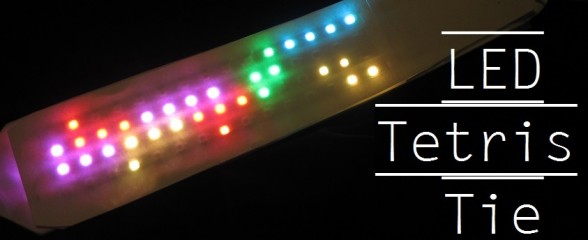
The first iteration of this project went from initial idea to working prototype in about 4 hours, a new record for myself and a testament to the power of open software/hardware. I had been teaching at the FSU STEM Camp all week with my usual geek attire (8-bit tie, PCB tie, LED Lab coat) and the kids asked me what ‘outrageously cool’ thing I was gonna wear on the last day. The problem was I had nothing left in my closet and feared I would let them down. So when I went home exhausted that night (it’s tough teaching over 100 8th graders to solder!) and sat down at the work bench trying to decide what I could do in a night. Inspired by Adafruit’s Amplie-Tie, this is what I came up with.
This will be a short post as this is only revision 1 and I plan to vet this out to a more thought out project at some point. Here’s a video of what I had at the end of the night: (skip to bottom of page for newest video)
The tie is made out of 80 WS2811 based RGB LED pixels and is driven by a DigiSpark microcontroller. I pulled in this library written in assembly to drive the display and modified this tetris engine heavily to suit my needs. With limited RAM I had to strip out unneeded features and optimize the code that runs the game similar to Tetris to make it work, I also converted it to support color values as it was originally monochrome only. The code is a definite WIP but posted on here on Github as I play with it in the future. Game moves are random and I plan to attempt some puzzle solving algorithms soon. I had all parts on hand and total project cost comes in around $50.
It’s powered by 2 18650 Li-Ion battery cells in a battery box I used for my Wedding Suit and had lying around. They are installed in a 3D printed battery box with switch.
Structurally it’s just two pieces of card stock with fun bits sandwiched between and taped to a cheap clip-on. I plan to revisit the design and embed the strips directly into a fabric tie for long term use. Remember, I only did this in a single night. The kids loved it and the mission was accomplished.
Future Features
Next I’d like to add a basic AI to play the game, and/or a bluetooth connection for a human to play the game using a smart phone.
Update 1
I’ve restructured the tie so that the LEDs are now embedded into the tie instead of pasted on the front. It looks much cleaner now, thought the LEDs are dimmer, diffused by the fabric. I’ve also rewritten a new program that simulates a firework display, in time for Independence Day parties.
Update 2
I’ve built a second tie run by an Arduino Pro mini with all electronics and battery built into the tie itself. No more extruding wires. The battery is an older aftermarket Samsung Galaxy S1 cell phone battery, and I designed and printed a battery holder with my Makerbot. The LED driver library has been switched to Adafruit’s Neopixel library, and a AI player has been written by Mofidul Jamal.
This work is licensed under a Creative Commons Attribution-NonCommercial 3.0 Unported License.

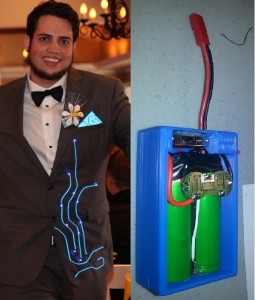
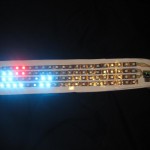
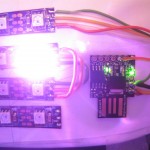
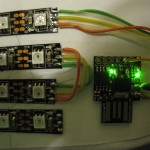
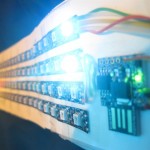
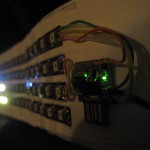
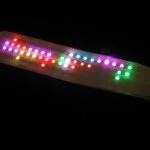
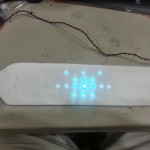
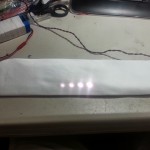
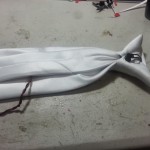
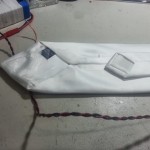
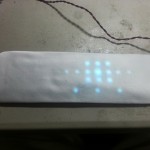
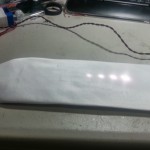
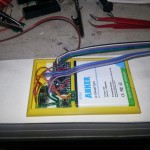
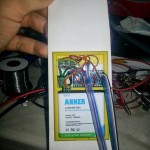
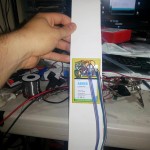


Trackbacks / Pingbacks